There are two goals when developing pre-bonsai trunks: create interesting movement, and minimize flaws.
Two of the most common flaws at this stage of development are awkward or inverse taper and scars on the lower section of the trunk. To keep these in check, I prune sacrifice branches before they get too big and thin crowded areas when more than two branches emerge from the trunk at the same point.
Here’s what this work looks like on a young Chinese quince.
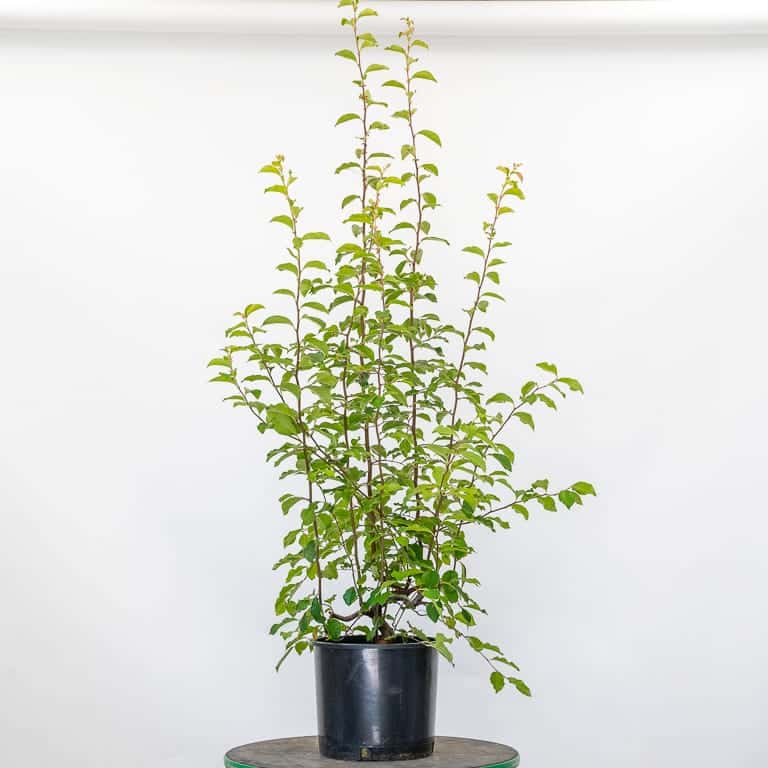
Chinese quince
I haven’t pruned the tree since repotting it in spring so it’s time to take a look and see what can be improved.
At first glance, there are many shoots emerging low on the trunk that I want to remove. Doing this will make it easier to see what’s going on and prevent the these branches from becoming large enough to create unsightly scars.
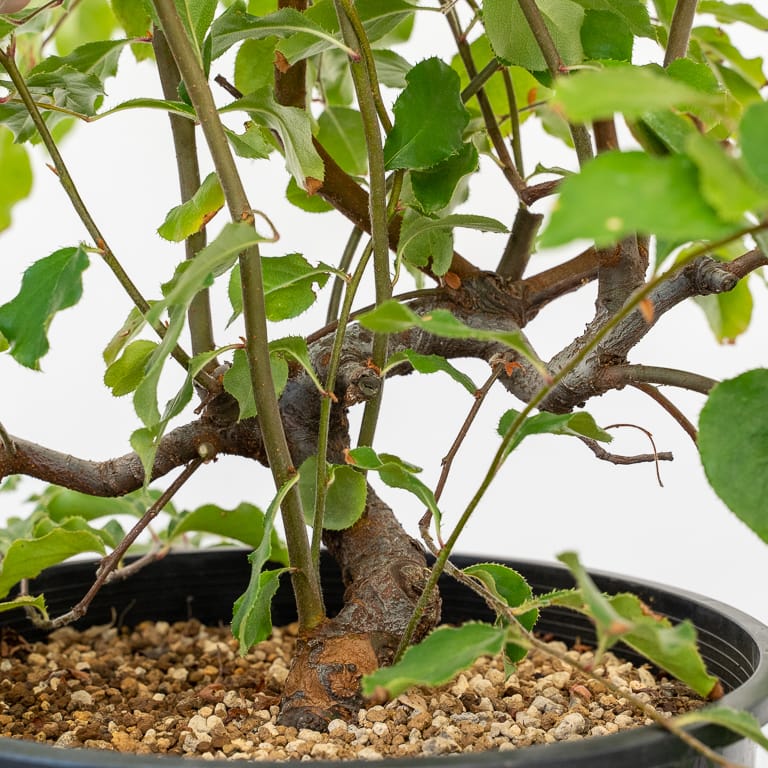
Water sprouts
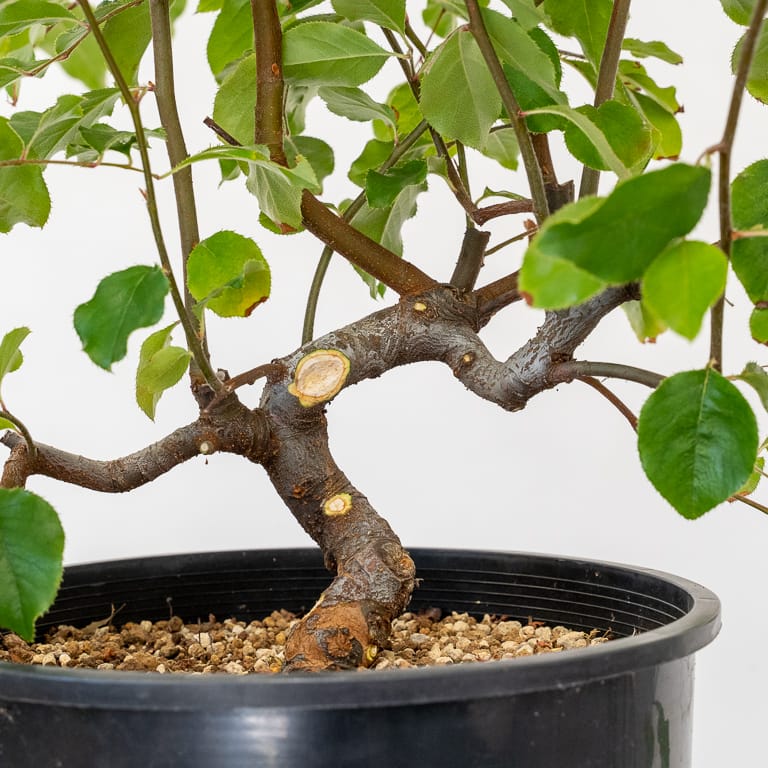
After removing the water sprouts and reducing the stub from a cut branch
Now that it’s easier to see the structure of the tree, I notice that three large branches emerge from the same point on the trunk. Keeping all three branches will speed up thickening, but it will also increase the likelihood that the area will swell and create an unsightly knuckle. The solution is to remove two of these three branches.
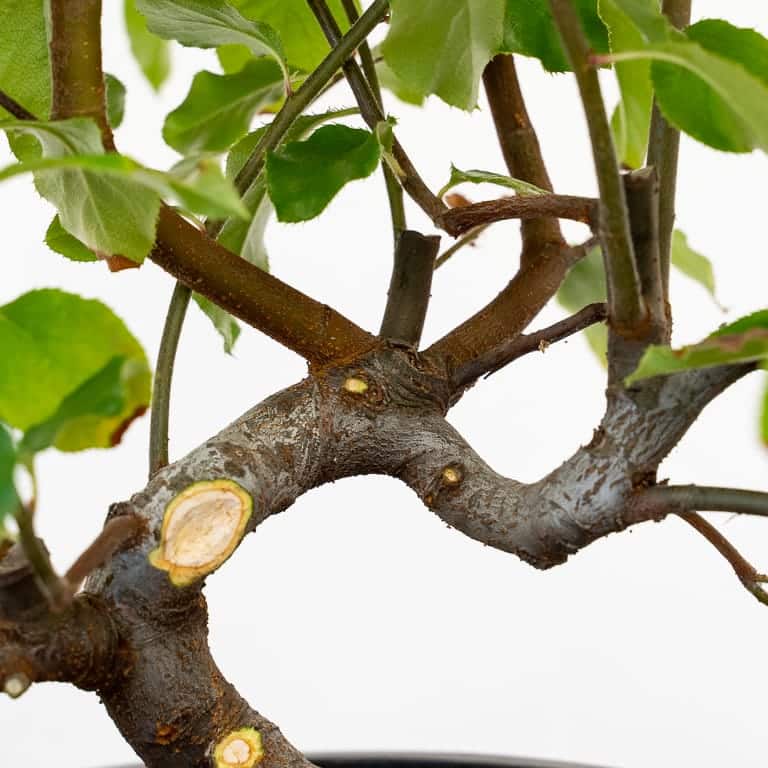
Too many branches emerging from the same point
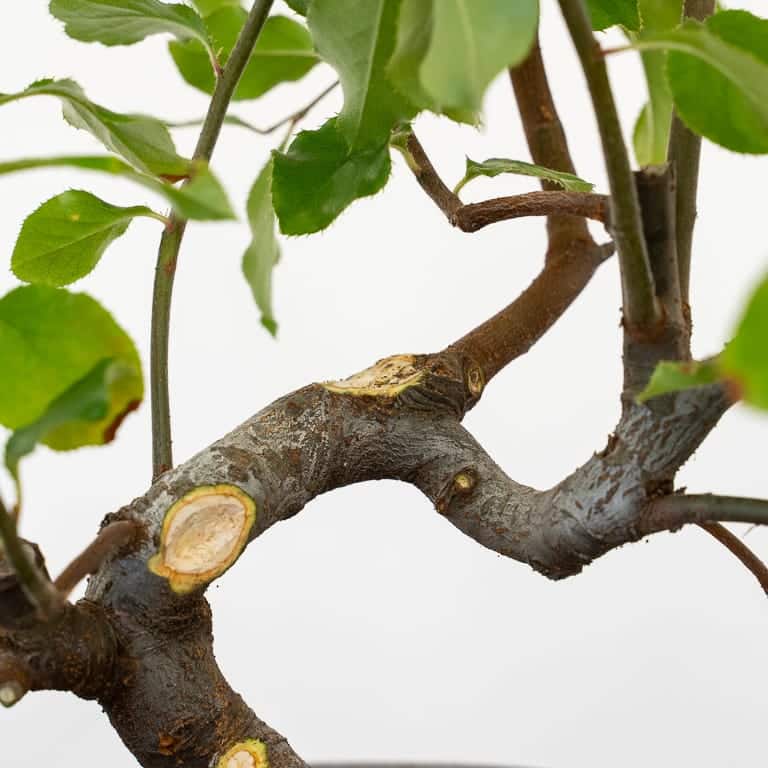
After removing two of the three branches
In addition to avoiding unsightly swelling, I want to make sure the newest section of the trunk has interesting movement. As quince naturally produce straight growth, it’s important to wire new shoots before they harden past the point where they can be bent.
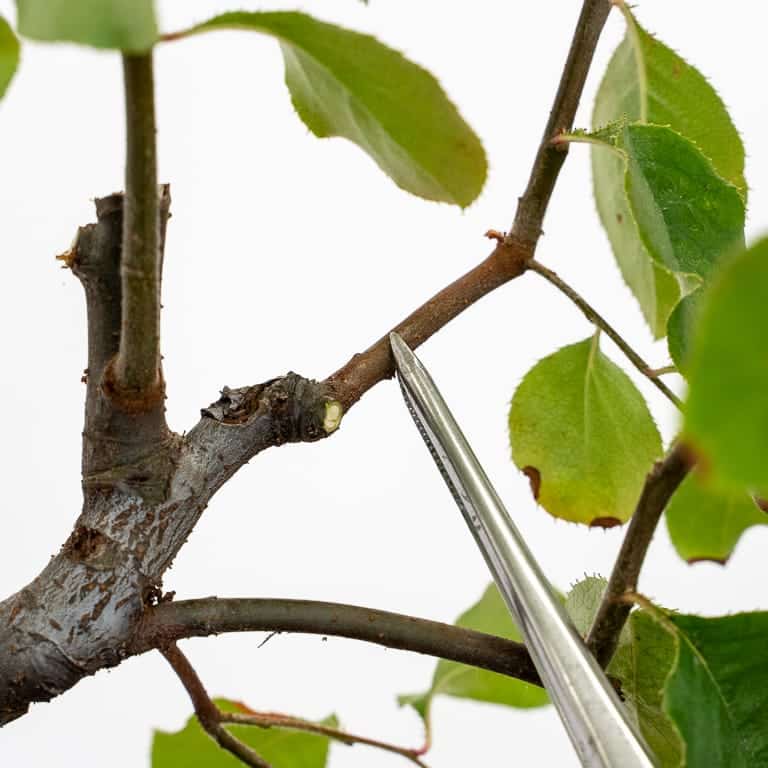
Good branch to continue the trunk-line
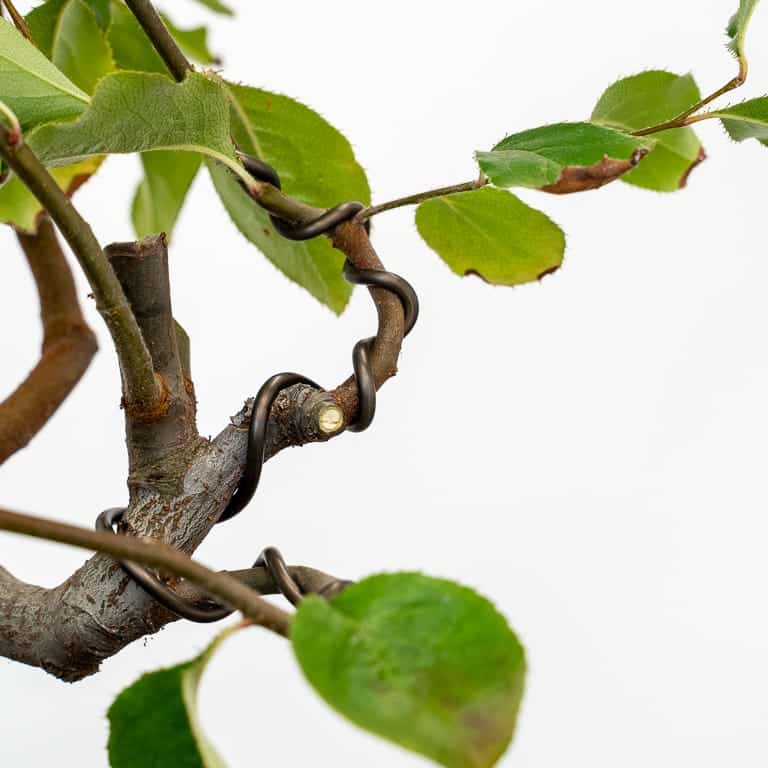
After bending the new leader
Now that I’ve created some movement in this branch, it can take on a more interesting shape than if I’d left it alone.
Here’s the tree after removing unnecessary branches and wiring the new leader.
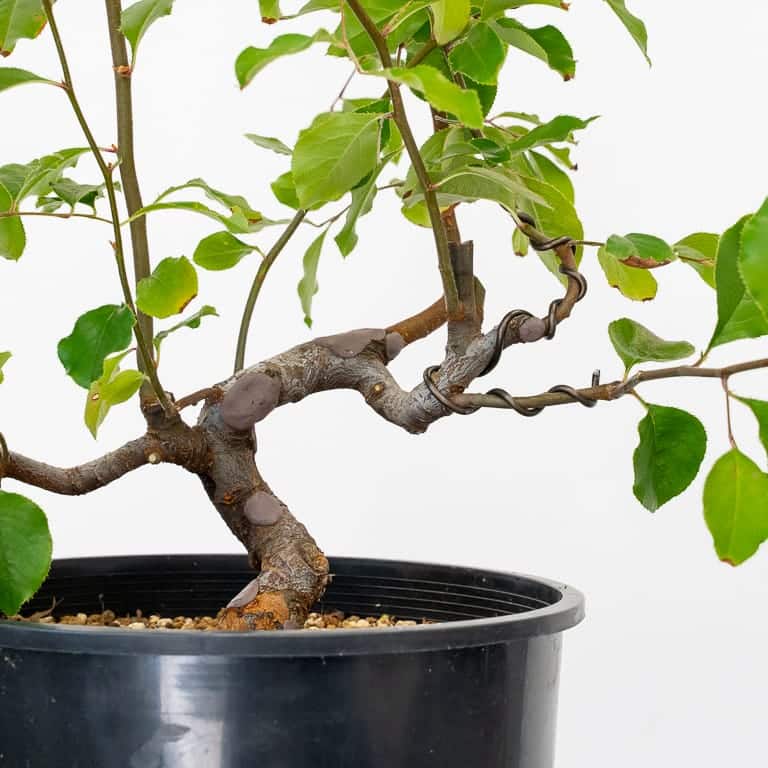
Work complete and wounds sealed with cut paste
I’ll let the remaining sacrifice branches grow until fall at which point I’ll evaluate the structure again to see if the tree needs pruning or wiring.
These steps form the bulk of the work during the trunk development phase. When I’m happy with the size and shape of the trunk, I can begin selecting smaller containers for the tree and start focusing on branch development. In the meantime, I’ll continue to fertilize the tree heavily to encourage as much new growth as possible.
Although I like the current shape of this tree, I expect I have between three and eight more years of trunk development before I can focus on the branches. That may seem like a long time, but it’s work that I enjoy!
Subscribe to Bonsai Tonight
New Posts Delivered Every Tuesday and Friday
Gary McCarthy says
The cut paste you use looks to be the putty type cut paste rather than the liquid cut paste. Is that correct? Is that because of the size of the cuts, or is the putty type cut paster your preference over the liquid cut paste?
Jonas Dupuich says
Hi Gary – good question! I usually use Kirikuchi-naoru for Chinese quince as it does a good job healing wounds on the species, but I noticed a few cuts had healed well with the putty too so I’m testing it on a few more trees and will see if it makes a difference next year.
Grant says
I notice in the photos several leaves with brown spot or curls at the end. What would be your concerns when you see this? (after I saw this on my Quince it defoliated completely last month)..
Also, do you have experience with repotting your quince in the September time frame? Thx!
Jonas Dupuich says
Hi Grant – my guess is that the brown tips are from letting the trees dry out. Quince can wilt when they are growing quickly, even when the soil is wet, so they really don’t like it when they dry out too much. The few spots on the leaves could be caused by physical damage or insects.
I have yet to try repotting Chinese quince in fall. They respond well to repotting in spring where I live so I usually repot them then.
Kale says
Great article thanks! Is now an ok time of year to remove large branches on satsuki azalea? I have a few with lots of branches in the same areas that will need to be addressed
Jonas Dupuich says
If the branch isn’t too big (up to 1/4″), now is OK. The best time to remove large branches on satsuki is early in the growing season so the wounds have as much time as possible to form callus during the growing season. I’d wait until the tree starts growing next spring to make big cuts.
Yaroslav says
Hi Jonas! When you say it will take another 3 to 8 years, what do you mean? Do you want to achieve a certain trunk thickness or/and movement? Will you develop primary branching during this period?
Jonas Dupuich says
Hi Yaroslav! I don’t know how big I want the trunk to get, but I know I want it significantly bigger than it is now. As for the primary branches, I’ll start thinking about that closer to when the trunk is close to the right size. I’ll likely do some work on the primary branches at that time.
Kip Pierson says
Jonas,
How much sun are you giving your quince? FULL SUN? 6 hours? etc. Your growth from Spring to now is light years ahead of mine. Granted, I live in Bend, OR, but I’m wondering if it’s not getting enough sun.
Jonas Dupuich says
Hi Kip – great to hear from you! I’ve had the quince in full sun this year, and they’re sitting on the ground. I haven’t fertilized a lot, and I repotted them this past spring, otherwise I’d expect about 25% more growth by now.
If the foliage doesn’t burn on your quince, I’d try giving them more sun.
Alex Voorhies says
Hi Jonas,
I love this series of posts, very informative. I wonder if you might comment on how often you plan to repot during trunk development. Do you have a sense of the tradeoffs between working on the nebari vs. accelerated growth rate?
Thanks!
Alex V.
Jonas Dupuich says
Hello Alex! More invasive repotting definitely slows growth. The one tree from this batch where I was most aggressive didn’t respond well to the repotting (I think a single shoot is now growing). I actually haven’t given a lot of attention to the roots, but I did make minor improvements when I repotted earlier this year.
My current thinking is that the best approach is to make sure the roots are really good before encouraging vigorous growth so you know the nebari is good even if you don’t do a lot of rootwork when you repot. I have been repotting these only when they start to dry out too much, about every 2-3 years at this stage. A better approach would be to use different containers that I could next or stack so I could add to the root mass without a full repotting. Another option at this stage would be to use a wood box.
And as for the trade-off, I don’t worry about the growth rate as much as getting the roots right. It’s disappointing to produce a great trunk with mediocre roots.